Ask Ethan: Is Earth the center of the Universe?

- When we look out at the Universe, especially at greater and greater distances, we see that it’s more uniform, smaller, denser, hotter, and less evolved the farther away we look.
- We also see that this remains true regardless of what direction we look in; it’s as though we’re in the latest, oldest, most evolved part, and everyplace else is younger.
- Does this necessarily mean that Earth is the center? It’s a common thought to have, but it turns out there’s another, much more well-accepted explanation: Big Bang cosmology.
There are some remarkable and surprising facts about the Universe, but three of them, put together, force us into a profound set of restrictions on existence itself.
- The Universe, on the largest scales, appears to be isotropic, or the same in all directions. No matter how far away we look, no direction appears to be “preferred” or to exhibit different properties than any other.
- Also, on the largest cosmic scales, the Universe appears to be homogeneous, or the same at all locations. Whether we look “here” or “there” or “anywhere else,” we see roughly the same temperatures, densities, numbers of galaxies, etc., so long as we sample a large enough region of space.
- And finally, the farther away we look in terms of distance — again, equally in all directions — the farther back we are seeing in time: seeing the Universe as it was at earlier and earlier moments.
Those three facts, of isotropy, homogeneity, and evolution in time, are some of the hallmarks of modern cosmology: both theoretically and observationally. But what does that mean for the Universe as a whole, and what does that imply for our place within it? That’s what Bob MacKendrick wants to know, as he writes in to ask:
“How can we look back in time and see a smaller more primitive universe in every direction unless the Earth is the center of the universe?”
Observationally, it’s true that when we look back in time, we do see a smaller and more primitive Universe in every direction. But is Earth the center of the Universe? It’s an easy trap to fall for, but it’s not something that can be true within the context of our best theory of gravity: Einstein’s general relativity. Here’s why.

If we go all the way back in time to 1915 — back when Einstein first put forth his general theory of relativity — it’s hard to fathom how little we knew about the Universe at the time. We were able to see stars within the Milky Way that were hundreds or even thousands of light-years distant, but knew of no way to measure the distances to stars greater than that. We did see nebulae, including spiral and elliptical nebulae, but it was not yet generally accepted that they were galaxies, or “island universes” as they were then called, beyond the extent of the Milky Way itself. We did not know that the Universe was expanding, and the Big Bang had not yet been formulated.
But with a new theory of gravity, general relativity, Einstein discovered a tremendous theoretical problem that arose by comparing his understanding of the Universe with the predictions of his theory. If, as Einstein thought, the Universe was:
- homogeneous, or the same density in all locations,
- static, or not expanding/evolving over time,
- and obeyed the laws of general relativity, which he strongly suspected was the case,
there was a pathological problem that arose: the Universe must be unstable. Under Einstein’s law of gravity, the presence and distribution of matter and energy determined the curvature of spacetime, and if you had a uniform distribution of matter in a static Universe, you found that the Universe wouldn’t remain static at all. Instead, because of all that matter, the Universe would inevitably collapse, contracting and eventually leading to a singularity: what we now know as a black hole.

Clearly, this both hasn’t already happened and, observationally, wasn’t in the process of happening. Einstein himself knew there must be something preventing it, and so — in either a stroke of genius or in desperation to save his theory — Einstein introduced a new term to his equations: a cosmological constant. This cosmological constant wasn’t a standard form of energy like matter and radiation, which are composed of particles and can either spread out or become denser under the influence of forces, but rather the cosmological constant was a form of energy that was inherent to space itself, and always pushed outward: acting as a net impetus to push objects within space away from one another.
Einstein reasoned that only by counteracting the inward pull of gravity on matter and radiation with the outward “push” of a cosmological constant could a static Universe be achieved, as some sort of “balance” state must be achieved. But in the coming decade of the 1920s, both theoretical and observational considerations would show that this line of thinking by Einstein could not possibly be correct. In fact, many criticized Einstein’s introduction of the cosmological constant for this purpose for one important reason: it was a conceptual solution, but in detail, it was an unstable one. If your Universe had any tiny imperfections, or inhomogeneities within it at all, such as stars, planets, or Einsteins, it couldn’t remain balanced, and parts of it would be doomed to collapse while others would be compelled to expand.
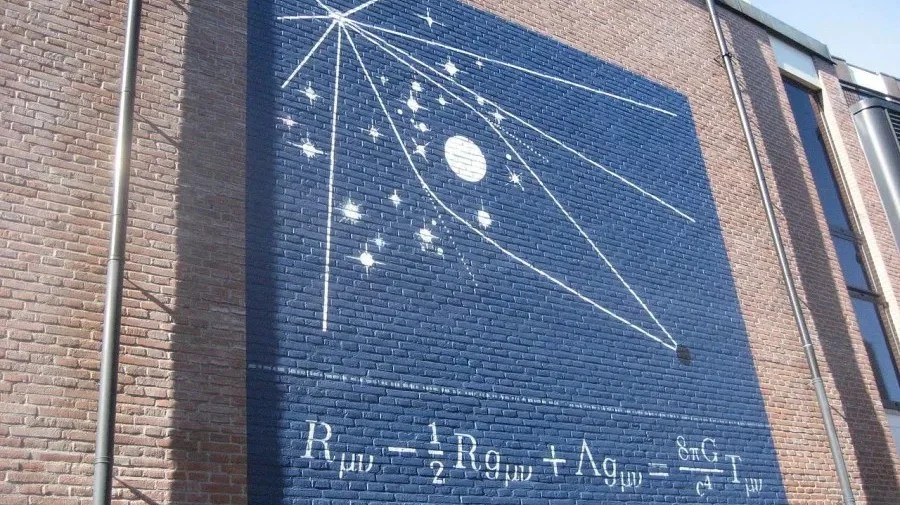
The first revolution was theoretical, and began with Alexander Friedmann in 1922. Working with the Einstein field equations, Friedmann became the first person to show how a Universe that was uniformly filled with:
- matter,
- radiation,
- a cosmological constant,
- and/or any other form of energy that you can write down,
would evolve over time. First off, it’s remarkable to note that such a Universe would, or must, evolve with time; that’s clearly not something that appeared to align with what we observe. Nevertheless, Friedmann not only persisted, but went as far as to show precisely how such a Universe would evolve, and what factors would determine its future evolution.
What Friedmann found was remarkable: a set of equations that related, on one hand, the total amount of matter and energy present on one side, to the rate at which the separation between any two arbitrary points in space would change. I’ll say that again in a slightly different way so that you recognize how profound this is: if you have matter and/or energy present in your Universe and uniformly distributed throughout it, then the separation distance between any two points in space will change over time, and the rate at which that distance changes is determined directly by the total matter and energy density. In other words, space cannot be static within a uniformly-filled Universe, as Einstein originally concocted.
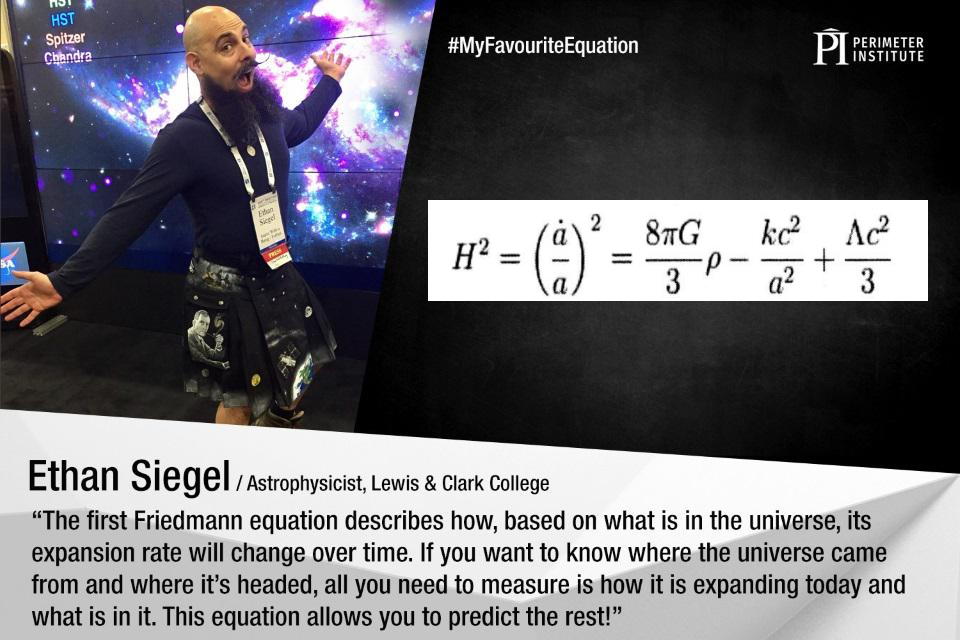
What Friedmann’s equations don’t tell you, however, is what direction that distance change is going to be in: positive or negative. In other words, the Universe can’t remain static, but it has two options for how it can evolve: it can expand, with the distance between any two points lengthening with time, or it can contract, with the distance between any two points shrinking with time. This happens all the time in physics: we have equations that govern how the Universe works, but they don’t give you unique solutions, but rather a number (two or more) of possible solutions. Mathematically, there are multiple answers. But in our physical Universe, there’s only one actual outcome that ever occurs.
How can we tell which outcome applies to our Universe?
You have to look to the Universe itself, and determine which of the possible solutions is actually physically relevant. The answer to this would come from the combination of three different observations.
- Henrietta Leavitt’s observations of the period-luminosity relation for Cepheid variable stars, which taught us that if you measure how quickly a Cepheid periodically brightens and dims, you can know intrinsically how bright it is.
- Vesto Slipher’s observations of the spiral and elliptical nebulae in the sky, which showed — from how the wavelength of their light was shifted — they moved with incredibly large speeds, and with speeds that usually indicated a motion away from us, rather than toward us.
- And Edwin Hubble’s (and his assistant, Milton Humason’s) observations of stars of that very same class that Leavitt investigated and cataloged — Cepheid variable stars — in other galaxies, which appeared tremendously faint compared to Cepheids within the Milky Way and the Magellanic Clouds.

It didn’t take long for people to put these puzzle pieces together. Although Hubble himself was traditionally credited with the discovery of the expanding Universe — and indeed, his observations were critical in making that determination — he wasn’t the first to do it. Back in 1927, Georges Lemaître put the pieces together with preliminary data from Hubble and Humason’s studies; then in 1928, Howard Robertson had the same idea, independently, and drew the same conclusion: the Universe was expanding. Hubble’s first paper linking these ideas together didn’t appear until 1929, and it wasn’t until the 1930s that he, Einstein, and the majority of the astrophysical community came around to the inescapable conclusion: the Universe is expanding.
In the time since then, of course, we’ve learned a whole lot more about the expanding Universe, which is just one of the four “cornerstones” of modern cosmology that have been in place beginning in the 1960s. The other three are:
- the discovery of the cosmic microwave background, which points to an early period of time in our cosmic history where it was so hot that neutral atoms couldn’t stably form,
- the measurement of the primordial abundance of the light elements and their isotopes, indicating an even earlier, hotter period where protons and neutrons were fused together in nuclear reactions,
- and the evolving formation of structure in our Universe, which takes us from an early uniform state to a late-time state rich in stars, galaxies, clusters of galaxies, and eventually a full-fledged cosmic web of structure.
When you put all four of these cornerstones together, a clear picture emerges: the hot Big Bang.
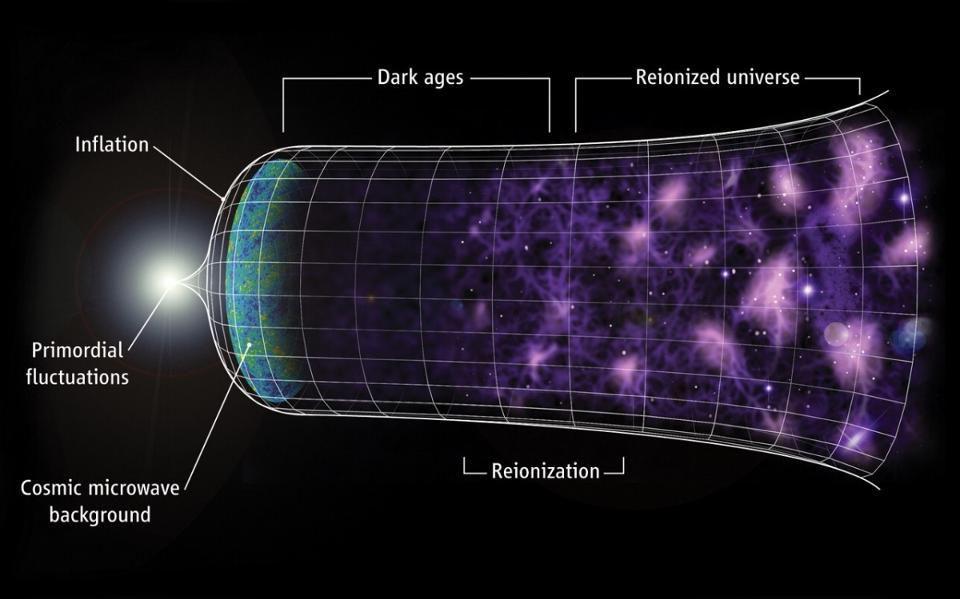
The hot Big Bang has gone by many names in the past. Georges Lemaître called it the “cosmic egg” when he first discussed an early state from which the Universe as-we-know-it expanded from. George Gamow, who fleshed out many of these cornerstones in the 1940s, called it the “primeval atom,” and therefore the cosmic microwave background’s original name was the “primeval fireball,” as it was recognized that a leftover thermal bath of radiation would have originally been very hot in the early Universe. But it was actually the Big Bang’s greatest detractor, Fred Hoyle, who coined the term Big Bang derogatorily in 1949.
But once the cosmic microwave background was discovered around 15 years later, the truth of the matter could no longer be ignored; the Big Bang described our cosmic origins — and fit the full suite of data — whereas none of the alternatives at the time could match its successes. Even today, some 60 years after the cosmic microwave background’s discovery, the hot Big Bang reigns unchallenged as our best idea concerning our cosmic origins, although it now possesses ingredients that were unknown to cosmologists and astrophysicists at the time: dark matter, dark energy, and an epoch that precedes and sets up the hot Big Bang itself, cosmic inflation. This picture, known as our concordance model of cosmology, is remarkably strong and robust.
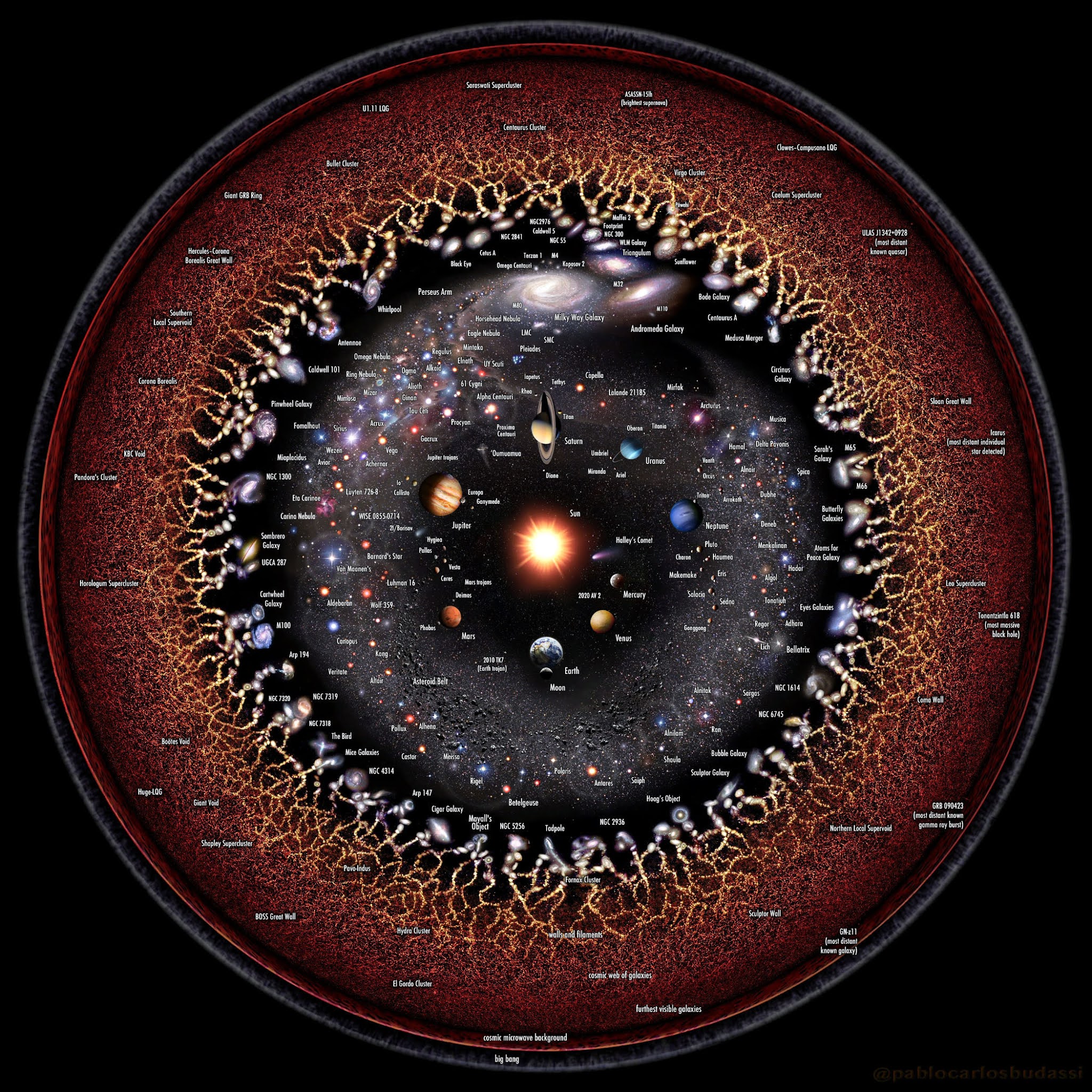
So why is it, then, that when we look back in time, we see a smaller, more primitive Universe no matter where we look? Why do we see that the Universe appears smaller and more primitive by equal amounts, as we look to ever-greater distances, in every direction?
It’s not because Earth is the center of the Universe. Instead, it’s because the Universe has a boundary: a boundary not in space, but in time, which corresponds to the moment that the hot Big Bang framework began to describe our Universe.
Here, where we are right now in the Universe, a cumulative 13.8 billion years have elapsed since the start of the hot Big Bang. This isn’t special to us from here at our vantage point; if we could instantaneously “teleport” ourselves to any other location in space — but demanded that we not travel through time to do it — we’d find the same thing was true: 13.8 billion years has elapsed since the start of the hot Big Bang. This is true where we are, and it’s also true everywhere else. That’s because the Big Bang wasn’t an event that occurred at a point, or one location in space. Instead, it was an event that occurred at a moment in time, but that occurred everywhere (at least, everywhere within the part of the Universe that we can observe) all at once.
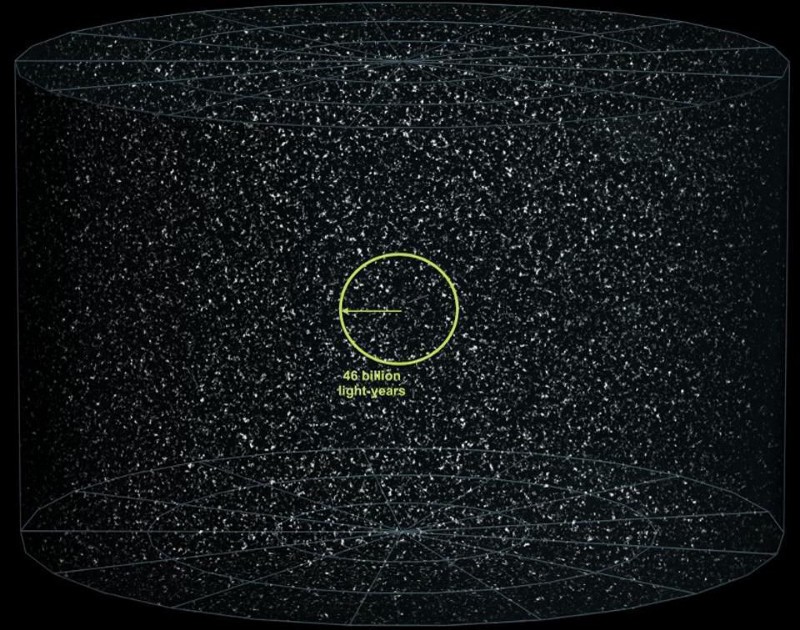
This means that there’s a tiny caveat to the notion that the Universe is homogeneous: it’s homogeneous — i.e., the same at all locations — in space, but not in time! In other words, we need to adjust our concept of homogeneity for the passing of cosmic time, and consequently, for the expansion of the Universe over that elapsed time. That’s because the speed of light is finite, and any emitted light must travel through the Universe, even as the Universe itself expands, before it arrives at our eyes. This is the reason why the light that does arrive from distant sources is not only redshifted, or stretched, by the expansion of the Universe, but that the objects we see are not as they are right now, but rather as they were when that light that’s arriving now was emitted: millions or even billions of years ago, depending on their distance.
This is not unique to our vantage point here on Earth. For example, when we look out at the most distant galaxy in the known Universe today, JADES-GS-z14-0, we’re seeing it at a time:
- when the Universe was only 285 million years old,
- just 2.1% of its current age,
- when the distance separating two points in space was just 7% of what it is today,
- and where the average density of the Universe was almost 3000 times as great as it is today.
If we were instead located within that galaxy (or, rather, whatever that galaxy has grown into over the subsequent 13.52 billion years), we would find the same thing when we looked back in the opposite direction: at the tiny protogalaxy that would eventually become the Milky Way. We would see the Milky Way as it was when the Universe was only 285 million years old, just 2.1% of its current age, when distances between two points in space was just 7% of its present value and where the density was ~3000 times as great as it is today.

The idea that Earth would be the center of the Universe is rooted in two core misconceptions about the Big Bang: that it happened at a particular location in space that all objects speed away from, like an explosion, and that the fact that we see objects moving away from us in all directions means we’re at, or very close to, the center of that explosion. But that’s not true, and all of our observations indicate that. If the Big Bang were an explosion, then:
- there would be fewer objects at greater distances, which isn’t what’s observed,
- densities would be lower when we look farther away, rather than the greater values observed,
- and the Universe would be no warmer at great distances than it is nearby, instead of the observed property that temperature increases the farther and farther away we look.
As scientists, we don’t draw conclusions likely, and we don’t reach a scientific consensus about something as monumental as the origin and history of our Universe unless the evidence supporting it is equally monumental. In the case of the hot Big Bang, it absolutely is, and that’s why the germ of an idea took decades to develop, didn’t become widely accepted until the critical supporting evidence arrived in the mid-1960s, and then has withstood every challenge — albeit, with slight modifications — in all the time since. The Universe looks “younger” the farther away we look because it’s only been around for a finite amount of time. The Big Bang, as Gamow put it so long ago, was “the day without a yesterday,” and the farther away we look, the closer back in time to that event we’re able to see. With new observations and new capabilities, we’re poised to probe closer to that moment of creation than ever before.
Send in your Ask Ethan questions to startswithabang at gmail dot com!





